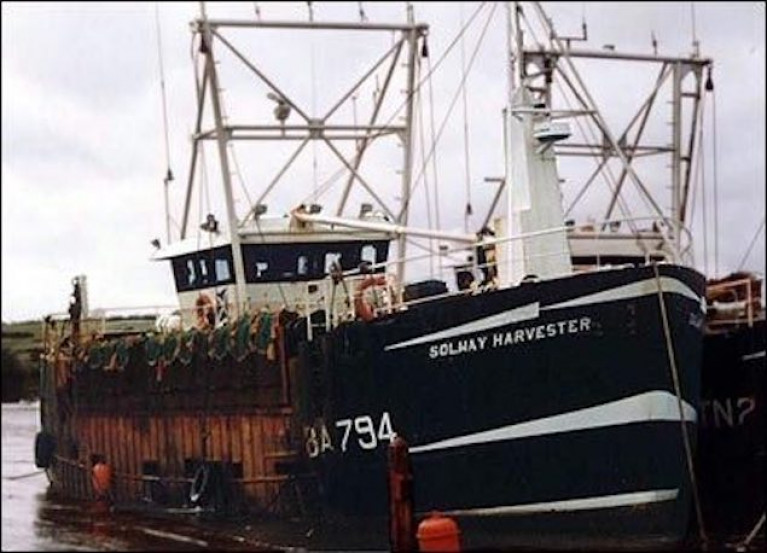Fishing communities on both sides of the Irish Sea have marked the 20th anniversary of the sinking of a scallop dredger with the loss of seven lives off the Isle of Man.
The Celtic League non-governmental organisation has also marked the deaths of skipper Andrew Mills (known as Craig), (29), his brother Robin Mills (33), their cousin David Mills (17), Martin Milligan (26), John Murphy (22), David Lyons (18) and Wesley Jolly (17).
All seven men died when their dredger was caught in a storm off the Scottish coast on January 11th, 2000.
The men were all from the Isle of Whithorn area of Dumfries and Galloway, and had set out from Kirkcudbright in south-west Scotland the previous day.
They fished off the Manx coast and planned to steam home on January 11th, but sought refuge in stormy conditions with gale-force nine winds on the northeast coast of the Isle of Man.
Nothing further was heard of the vessel until an emergency beacon was picked up later that day.
The search and rescue mission organised included Manx lifeboats from Ramsey, Port St Mary and Douglas, as well as the Isle of Man Steam Packet Company ferry Ben-My-Chree.
An Irish Air Corps helicopter was involved in the joint search involving vessels and aircraft from Prestwick in Scotland and Anglesey in Wales. The next day two unopened lifeboats from the vessel were found.
The wreck was found 18 km from the Manx coast in 35m of water on January 15th, 2000. The bodies of the seven crew members were on board, but the British Government refused to fund the rescue operation and recovery of the crew.
The Manx government-funded the £1 million the salvage operation. The crew were later returned to their native Scotland for burial.
The British Marine Accident Investigation Branch found that the vessel capsized because its fish room flooded, making it unstable.
Water drained unnoticed into the fish room through scuttles (hatches) on the deck which did not have their covers on.
It said a pump was blocked, and an alarm which warns when the bilges are filling with water was broken - meaning the skipper had no warning the room was flooding.
In the rough seas, the vessel rolled sideways to 30-40 degrees. Tonnes of fish and gear shifted to starboard and water became trapped on the main deck.
Although buoyancy would have allowed the vessel to roll back to 20-25 degrees, the Solway Harvester never regained stability and gradually rolled onto its side.































































